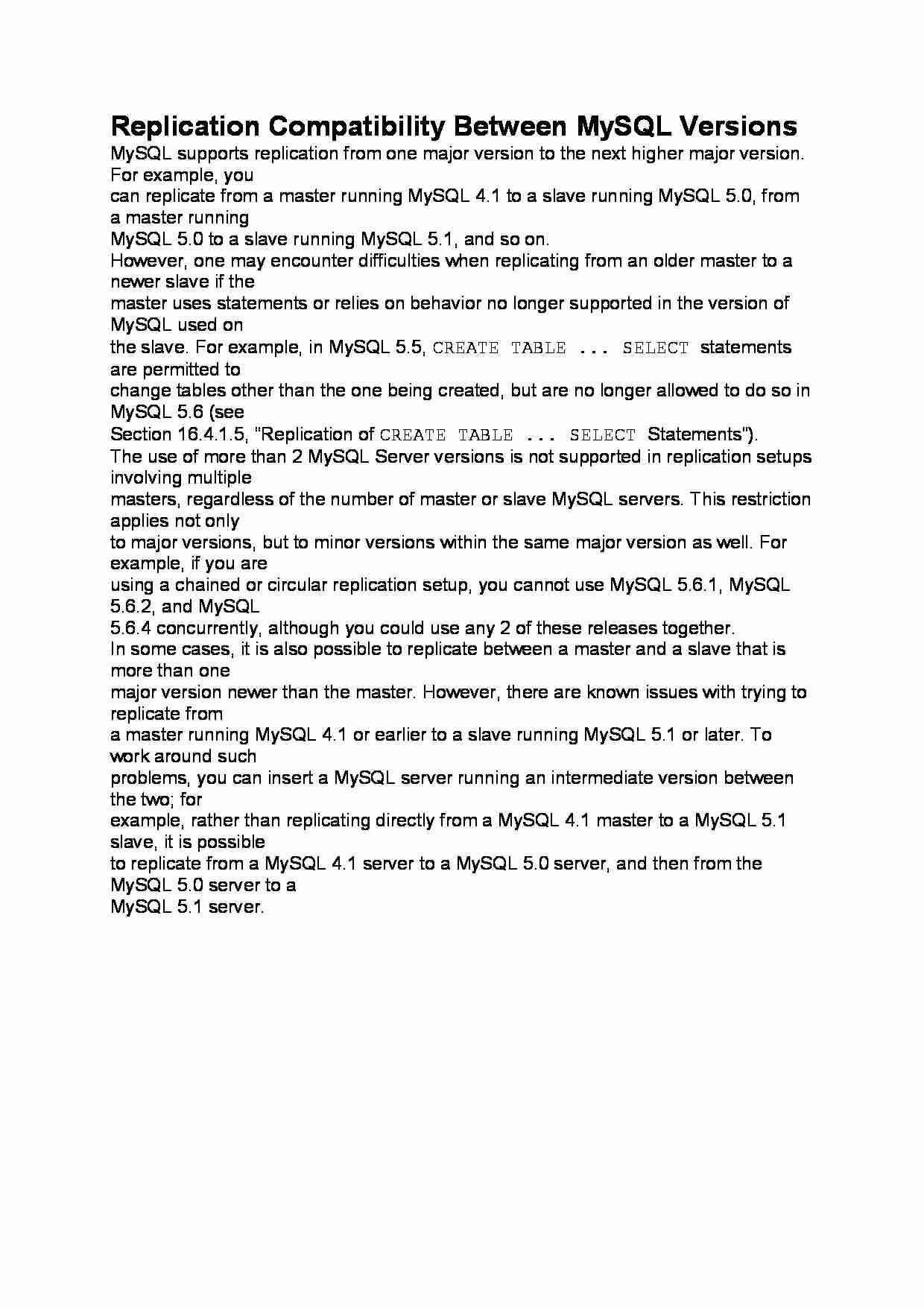
Replication Compatibility Between MySQL Versions
MySQL supports replication from one major version to the next higher major version. For example, you
can replicate from a master running MySQL 4.1 to a slave running MySQL 5.0, from a master running
MySQL 5.0 to a slave running MySQL 5.1, and so on.
However, one may encounter difficulties when replicating from an older master to a newer slave if the
master uses statements or relies on behavior no longer supported in the version of MySQL used on
the slave. For example, in MySQL 5.5, CREATE TABLE ... SELECT statements are permitted to
change tables other than the one being created, but are no longer allowed to do so in MySQL 5.6 (see
Section 16.4.1.5, “Replication of CREATE TABLE ... SELECT Statements”).
The use of more than 2 MySQL Server versions is not supported in replication setups involving multiple
masters, regardless of the number of master or slave MySQL servers. This restriction applies not only
to major versions, but to minor versions within the same major version as well. For example, if you are
using a chained or circular replication setup, you cannot use MySQL 5.6.1, MySQL 5.6.2, and MySQL
5.6.4 concurrently, although you could use any 2 of these releases together.
In some cases, it is also possible to replicate between a master and a slave that is more than one
major version newer than the master. However, there are known issues with trying to replicate from
a master running MySQL 4.1 or earlier to a slave running MySQL 5.1 or later. To work around such
problems, you can insert a MySQL server running an intermediate version between the two; for
example, rather than replicating directly from a MySQL 4.1 master to a MySQL 5.1 slave, it is possible
to replicate from a MySQL 4.1 server to a MySQL 5.0 server, and then from the MySQL 5.0 server to a
MySQL 5.1 server.
... zobacz całą notatkę



Komentarze użytkowników (0)